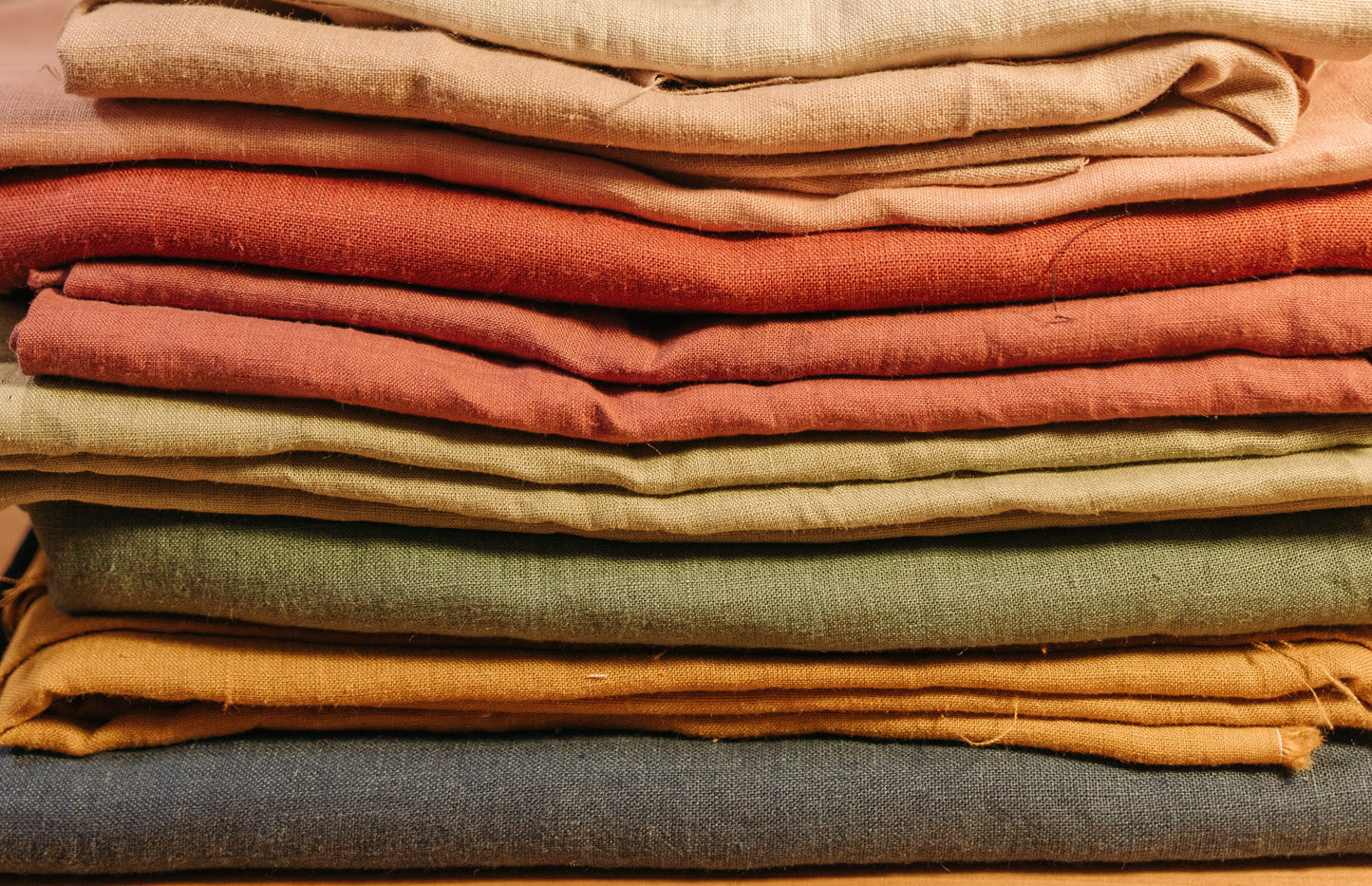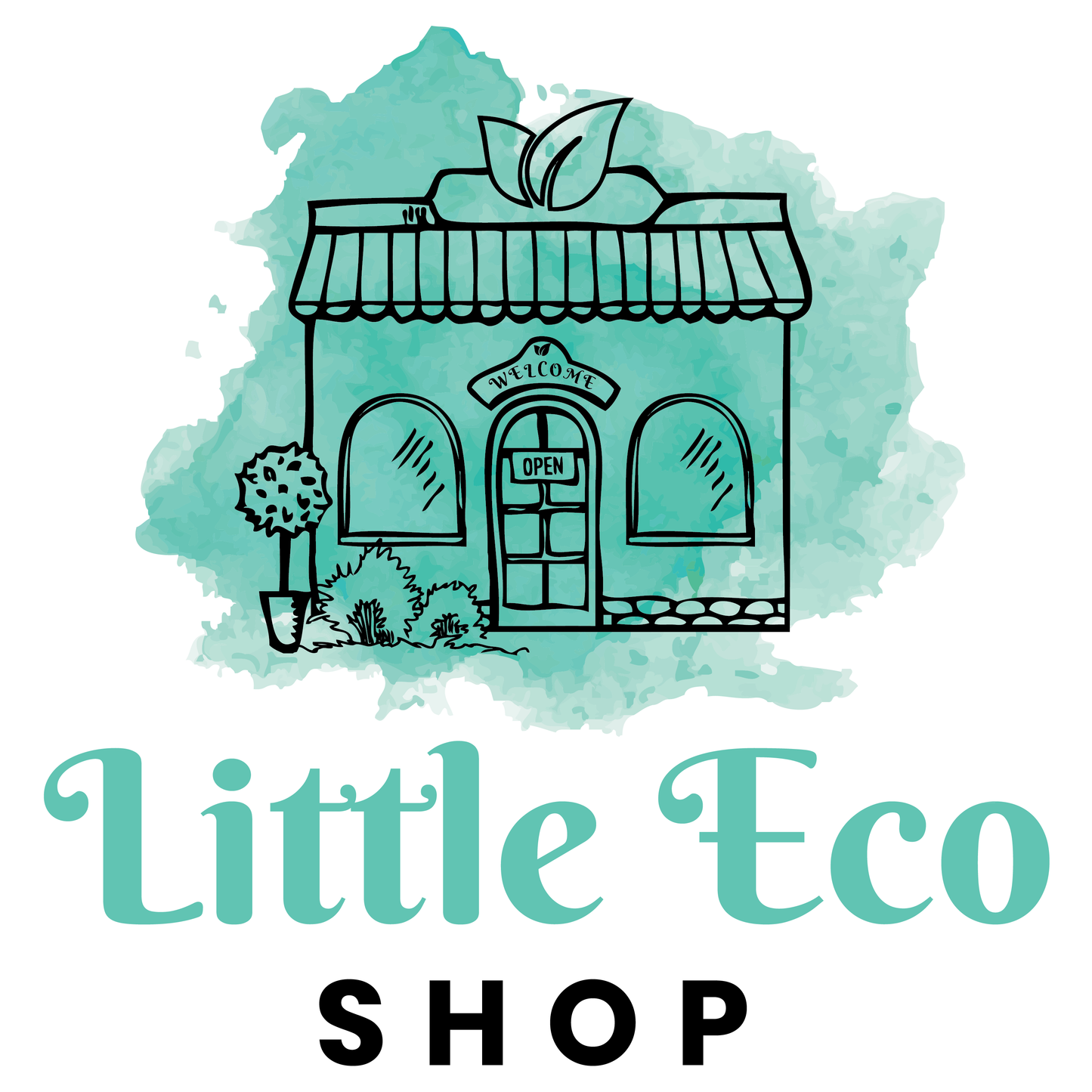
The fabrics we invite into our homes are often the last thing we consider when transitioning to an eco-friendly lifestyle. Ditching plastic shopping bags and single-use items for reusables is simpler and more obvious than analysing the composition of our bedsheets. But the fabrics we envelop ourselves in are the ultimate reusables, washed and worn countless times, and it’s for this very reason that we should get acquainted with them. There is so much focus, currently, on slow and circular fashion, but we need to make sure that the textiles we prize for longevity and recyclability aren’t harming the environment more than helping it.
Whether we realise or not, the fibres in our clothing, sheets, soft furnishings, and children’s toys are constantly sloughing off – I’m sure you’ve noticed tiny fibres pilling from a wool jumper or blanket? Well, every wear, wash and tumble dry pills away ever more microfibres. These become airborne as dust, which we breathe in constantly, and wash down the drain, slinking into waterways. A recent study published by Environmental Science & Technology Letters found that a single tumble dry can launch thousands of microfibres into the air, while previous research has highlighted how washing machines drain microplastics into the ocean.
This wouldn’t be so concerning if these microfibres consisted of biodegradable cotton or hemp, but 60 percent of the world’s fashion contains various plastics, like polyester, nylon, and acrylic. Aussie research from 2019 found that we consume five grams of plastic every week – that’s the equivalent to a credit card (eep!). The World Health Organisation confirms that microplastics are omnipresent in our air, food, and water but says that more research is needed to understand the health impacts. What we do know is that plastics contain harmful compounds, linked to endocrine disruption and cancer. Studies in marine species have connected microplastic exposure with reproductive harm, growth delays, oxidative stress, and neurotoxicity. It doesn’t take a scientist to understand that eating plastic isn’t smart.
We know that plastic microfibres are a pressing issue, as last year’s National Plastics Plan set targets to improve microfibre filters in washers and dryers. But while we wait for the sluggish wheels of bureaucracy to mobilise on this issue, we can act now to reduce our exposure, getting to know the textiles in our homes and reading composition labels before we buy. But as with food labels, textile labels can be deceiving, and some fabrics are marketed as eco-friendly when they’re anything but. Below, we give you the rundown on common textiles and their environmental impact.
Hemp
The most sustainable and versatile plant on the planet, hemp gives us nutritious food, durable building materials, serves as a nourishing skincare additive, and makes for a strong, breathable, antimicrobial fabric. Hemp crops require very little water, can produce 2-3 times more material per acre than cotton, and replenish soil rather than depleting it of nutrients. Hemp is a wonderfully hardy material that will last and last, becoming softer with each wear. Biodegradable at the end of its life, we’re crowning hemp as the queen of eco-friendly fabrics.
Linen
Linen is having a moment and it’s not hard to see why. Lauded for its easy-care, lightweight, and breathable nature, linen looks beautiful, while being incredibly versatile and durable. You can’t walk into a clothing or homewares store without noticing a beautiful selection of linen wares on offer. A summer favourite, linen regulates body temperature and helps keep us cool. Linen is crafted from flax, which requires much less water than cotton to grow, and no chemical fertilisers or pesticides. As a natural fibre, it’s completely biodegradable too. Look for organic varieties to ensure the flax has been grown with minimal environmental impact.
Wool
Where alpaca wool leaves a large environmental footprint, sheep wool is less impactful than conventional cotton to produce. Prized for its softness and thermoregulatory properties, wool is a costly fabric and is often blended with plastic fibres, like nylon, acrylic and polyester, to supply consumers with affordable winter clothing options. While an ethically questionable choice, due to varying standards of livestock care and the commodification of animals, pure wool is a biodegradable and renewable fabric choice. Conventional wool, however, is often chemically treated and sometimes coated with a plastic-based resin, called Hercosett 125, so be sure to choose pure, high-quality wool products if you can’t make it through winter without a warm, woolly coat. Look for brands who use traceable wool and demonstrate supply chain transparency, with an emphasis on ethical sheep rearing. Or better yet, consider thrifting your way to a cosy winter wardrobe.
Silk
Perhaps the most luxurious fabric out there, silk is indescribably soft, smooth, and lightweight. Silk pillowcases are gaining popularity, as the latest in an endless slew of beauty essentials, and silk sheet sets can sell for well over a cool G. But this material is anything but cool from an environmental perspective. Silk is the worst offender on the Higg Material Sustainability Index, which considers global warming impact, eutrophication, water scarcity, resource depletion and chemical use. And then there is the ethical quandary posed by the cruel methods used to obtain most silk.
Silk is essentially the product of moth spit (not so chic after all, hey?), spun by the Bombyx mori moth, more commonly known as silkworm. Early in its lifecycle, the silkworm spins an unbroken silk thread for its cocoon, using spinnerets on its head. Traditional methods of silk harvesting, involve steaming or boiling the silkworm alive, to prevent the cocoon from hardening, which would result in coarser silk. After hundreds of years of selective breeding, the silkworm, can no longer fly, see, camouflage, or fear predators. While ethical silk harvesting processes are on the rise, silk’s contribution to eutrophication and water scarcity can’t be ignored. Despite all of this, silk is biodegradable and recyclable, therefore not contributing to microplastic contamination, but can hardly be considered eco-friendly.
Cotton
Thirsty cotton is the fashion industry’s most commonly used fabric. While a natural, recyclable, and biodegradable fibre, conventional cotton is often genetically modified and drenched in agrichemicals, causing soil degradation, and endangering the lives of the farmers who toil its fields. Cotton accounts for 2.5 percent of the world's arable land, but a whopping 16 percent of the world's pesticide use, raising questions about the flow-on effects of environmental contamination. Cotton also makes a significant contribution to greenhouse gas emissions and water scarcity, making it a less than desirable crop, however natural and vegan it may be. Look for organic and recycled cotton products, which require minimal water and chemicals to produce.
Bamboo
Thanks to clever marketing, bamboo became known as a sustainable fabric option overnight. All of a sudden, it was everywhere, accompanied by classically greenwashed earthy packaging. While bamboo itself is a remarkably sustainable crop – fast-growing, self-regenerating and requiring no fertiliser or pesticides – the process of converting bamboo into fabric isn’t so squeaky green. The method used to make bamboo viscose (otherwise known as bamboo rayon), which gives us the silky soft bed sheets and underwear we know and love, involves dissolving bamboo in a chemical solution to produce a viscous mixture, which is spun into fabric. As with all other types of viscose/rayon, the chemicals used in this process are highly toxic and around 50 percent of waste from production cannot be recaptured or reused. And while bamboo doesn’t “need” agrichemicals to grow, this is not to say that none are used to maximise harvests.
You’ll find that most stretchy bamboo garments, like socks and underwear, feature a small amount of Lycra, spandex, or elastane, which are plastic derivatives - this means that the resultant fabric is not biodegradable. The internet is split on whether bamboo viscose should be composted or recycled, due to the harsh chemicals used in its production.
There is a truly eco-friendly variety of bamboo fabric, called bamboo linen, but it is quite coarse to the touch and expensive to produce, compared to the uber soft bamboo we’ve become accustomed to. If you can’t go past the softness and breathability of bamboo, look to brands who use organic bamboo, are transparent about their processes, and responsibly manage the waste created during this process, with more than feel-good clichés.
Lyocell
Lyocell is a brilliant alternative to bamboo rayon or viscose, sharing many of the same properties, like softness and breathability, while being truly sustainable. Lyocell is produced in much the same way as bamboo rayon, with the exceptions being that lyocell uses a less-toxic solvent, and employs a low-energy, low-water, closed-loop production process. In this process, 99.5% of the solvent is captured and reused used and the remaining 0.5% is discharged as non-hazardous waste. Lyocell is commonly made from eucalyptus (TENCEL), bamboo (Monocel) and beech – fast growing plants requiring no irrigation or agrichemical application. Pure lyocell is biodegradable and recyclable but as with bamboo, scrutinise your labels for the addition of plastic-derived fabrics.
The plastic fabric fam
Synthetic fibres are derived from non-renewable fossil fuels which contaminate the environment with hazardous chemicals and pump ever more microplastics into our air and water. Popular for their durability and low cost, synthetics are often blended with natural fibres to bring down manufacturing costs and produce crease-resistant fabrics. As much as we’d love to ditch plastic for good, there are some instances where plastic fabrics just work – think nylon swimwear and protective clothing and bedding. While it may not be possible to banish the plastic fam completely, we can reduce its environmental impact by thrifting, or buying items crafted from recycled plastic, and reduce our microplastic exposure by keeping plastic fibres out of the dryer and investing in a good quality air purifier. Below is a list of the most common monikers for plastic fabrics and fibres, so you know what to haberdash-away from when you shop:
- Acetate
- Acrylic
- Arctic Fleece
- Lycra
- Lurex
- Manmade material (often found on shoe labels)
- Microfibre
- Neoprene
- New material (often found on toy labels)
- Nylon
- Polartec/polar fleece
- Polyester
- PVC
- Olefin
- Spandex
